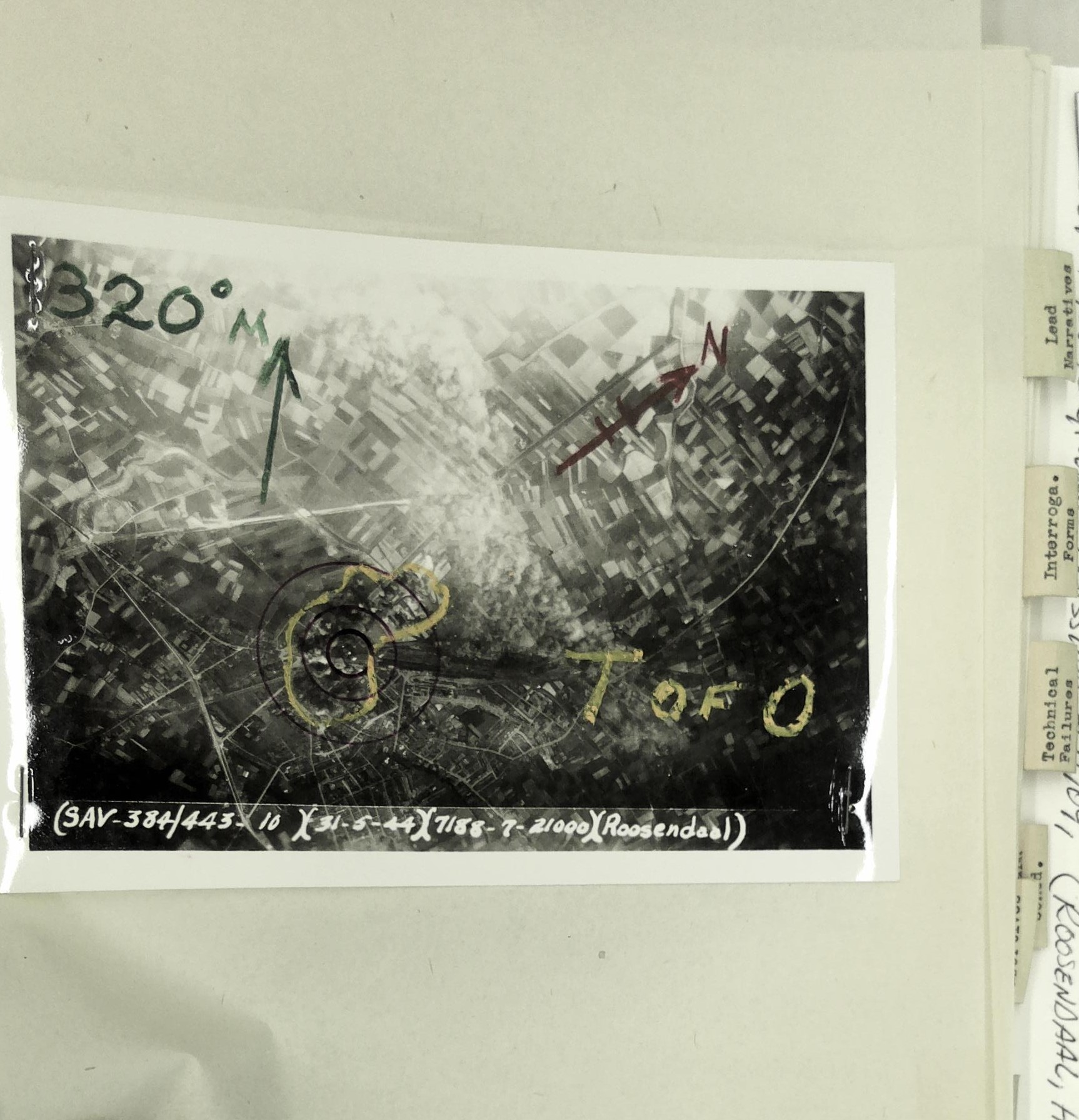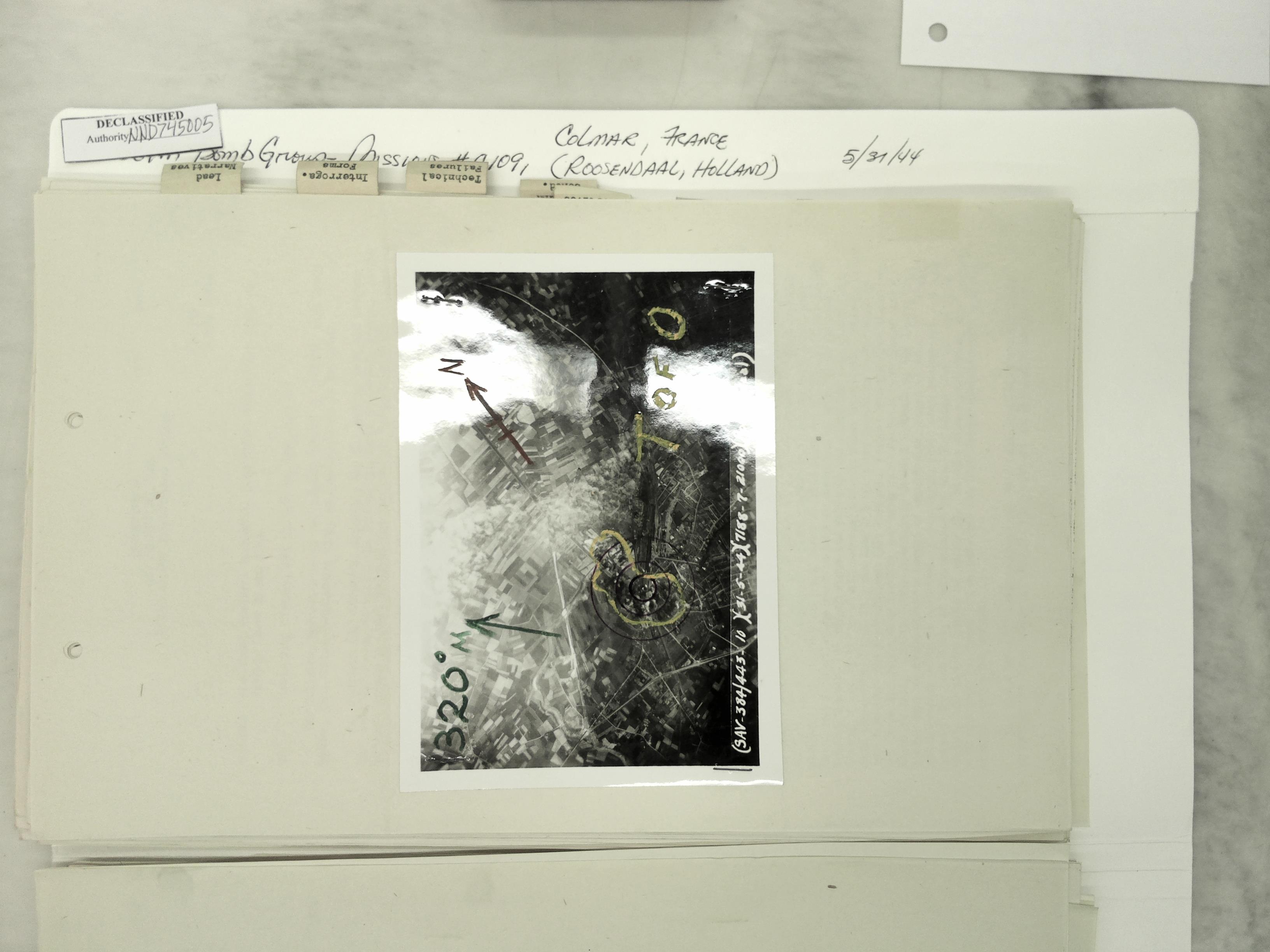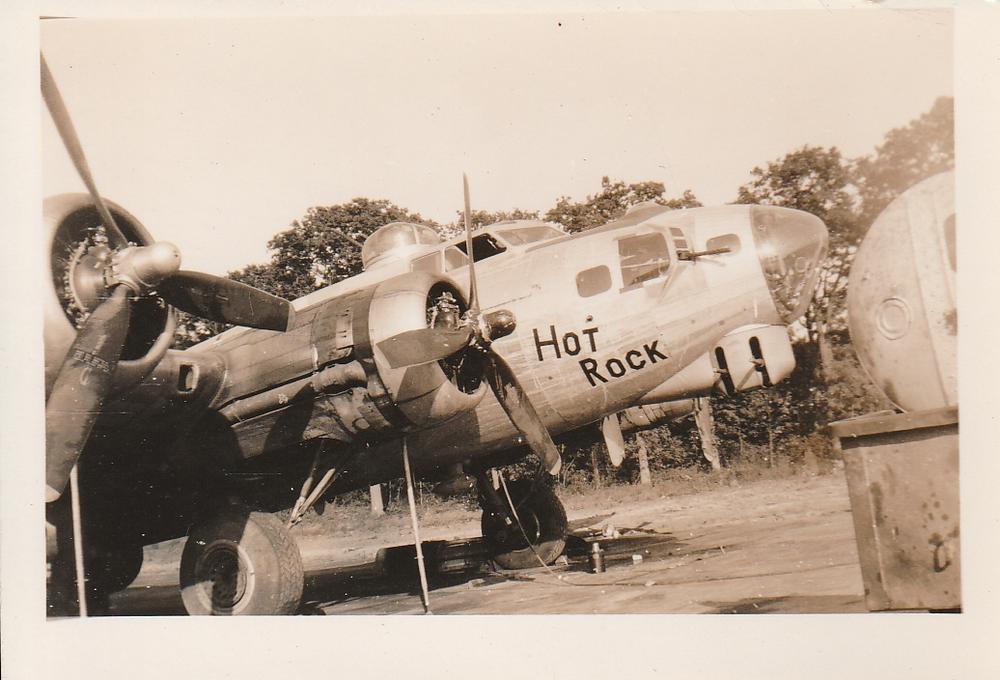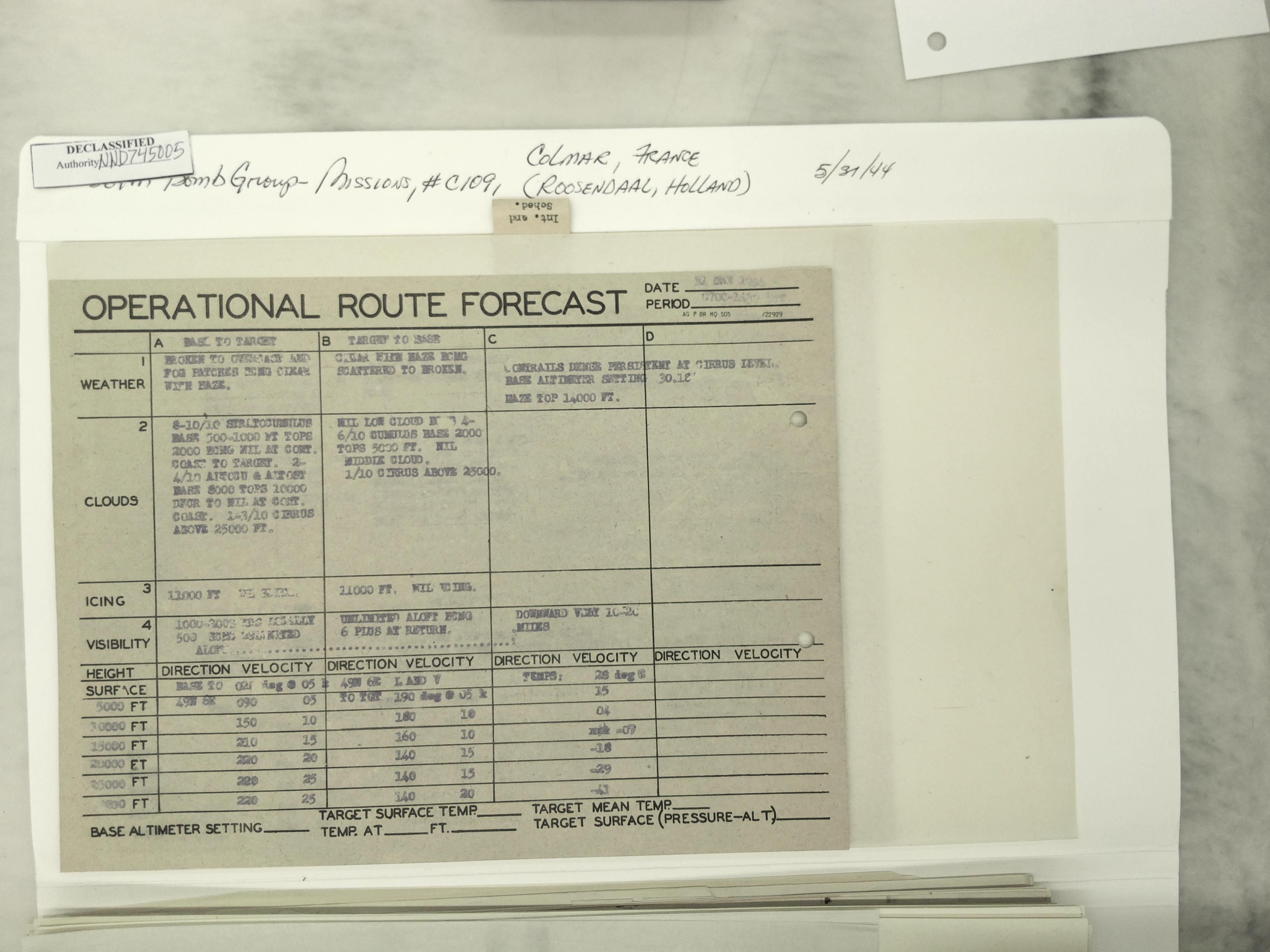
Photo of actual target attacked, at Roosendaal, The Netherlands. Photo courtesy of www.384thbombgroup.com

Railroad marshalling yards at Colmar, France - the original Primary Target. Photo courtesy of www.384thbombgroup.com

B-17G #42-97320 "Hot Rock" - aborted todays mission over the North Sea. Photo from Leonard R. Memic, courtesy of www.384thbombgroup.com

Scrubbed from mission on the ground, B-17G #42-37822 "The Lead Banana". Photo courtesy of www.384thbombgroup.com

Original weather report at mission briefing on 31st May 1944. Weather was to have a major impact. Photo courtesy of www.384thbombgroup.com
Aircraft on this mission
| Damn Yankee | Boeing Airplane Company | 42-102518 | View |
| De Rumble Izer | Boeing Airplane Company | 42-102620 | View |
The Story of Mission # 121
Last updated: July 24, 2025, 3:27 amOn 31st May 1944 the 384th were in action again, with 17 aircraft assigned to bomb the railroad marshaling yards at Colmar, France. With 1 unused ground spare, 2 aircraft that scrubbed the mission, 1 flying spare that returned to base and 1 that aborted, 12 aircraft made their way towards their target, departing Grafton Underwood between 08.01am and 08.09am. Bomb load today was AN-M64 500lb. general purpose bombs.
The 384th Bomb Group formed the High Group of the 41st Combat Bomb Wing. Formation was succesfully completed over Molesworth, before heading to the coast which they crossed at 09.42am. They crossed the enemy cost at Ostend a short time after around 09.42am, at an altitude of 19,300 feet. Group Lead crew today was flown by Capt. Gerald Sammons, in B-17G #107221.
The Group had a solitary abort today, B-17G #42-97320 Hot Rock flown by 2nd Lt. Robert Eakins - the aircraft was forced to turn back over the North Sea at 09.51am due to high engine oil temperatures in both the #1 and #3 engines. The aircraft returned to Grafton Underwood, complete with its bomb load of 10 x 500lb. GP bombs. This aircraft was to go and have a distinguished career with the 384th, being assigned to 101 missions, claiming combat credit for 77 of these.
It quickly became apparent that bad weather and cloud cover would prevent the bombing of the primary target, the railroad marshalling yards at Colmar, France and also the secondary target. It was decied that targets of opportunity (TOO) would be sought. Eventually an suitable target was sighted, and the wing made a pass over the new target of opportunity. Due to an issue with the bomb bay doors sticking on the lead aircraft, the 384th element required a further two passes over the target before releasing their bomb load, from an altitude of 21,200 feet at approximately 11.23am - the rest of the wing circling nearby awaiting their return. Later analysis of the target attacked showed it to be the railroad marshalling yards at Roosendaal, The Netherlands, midway between Antwerp and Rotterdam.
After reforming, the wing headed back to the UK, crossing the enemy coast at 11.34am and crossing the English coast at Harwich at 12.06pm. The first of the 384th aircraft started to arrive back at home base from 12.35pm. There had been substantial fighter cover today, which prevented any encounters with the bombers.
With kind thanks to the 384th Bomb Group website (384thbombgroup.com) for permission in using material from their records in the making of this story. It holds a wealth of information, documents and photographs of the Group’s activities during World War 2.
Research courtesy of Keith Andrews on behalf of 384th Bombardment Group Museum.
Gallery

Photo of actual target attacked, at Roosendaal, The Netherlands. Photo courtesy of www.384thbombgroup.com

Railroad marshalling yards at Colmar, France - the original Primary Target. Photo courtesy of www.384thbombgroup.com

B-17G #42-97320 "Hot Rock" - aborted todays mission over the North Sea. Photo from Leonard R. Memic, courtesy of www.384thbombgroup.com

Scrubbed from mission on the ground, B-17G #42-37822 "The Lead Banana". Photo courtesy of www.384thbombgroup.com

Original weather report at mission briefing on 31st May 1944. Weather was to have a major impact. Photo courtesy of www.384thbombgroup.com
Aircraft on this mission
| Damn Yankee | Boeing Airplane Company | 42-102518 | View |
| De Rumble Izer | Boeing Airplane Company | 42-102620 | View |